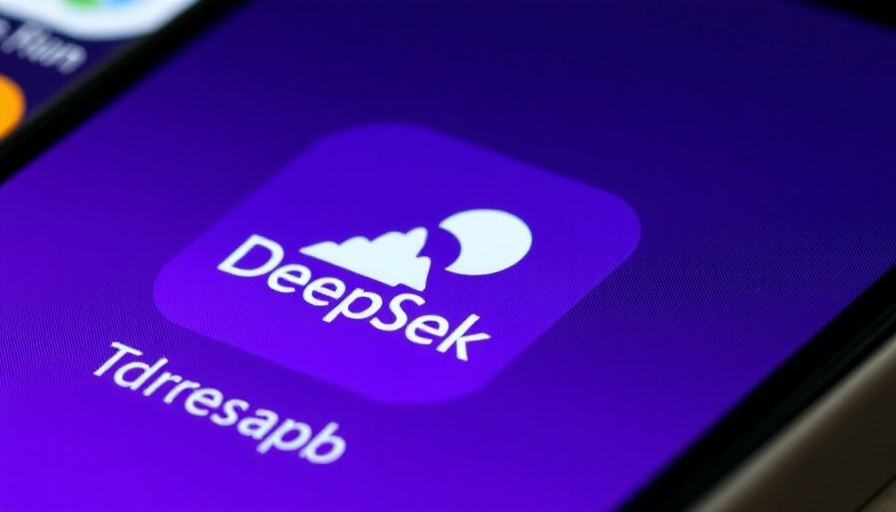
DeepSeek: A Game Changer in the AI Landscape
In March 2025, the technological landscape witnessed a significant shift with the emergence of DeepSeek, a Chinese-based AI chatbot that promises to rival renowned applications like OpenAI's ChatGPT. This development has ignited a fierce debate in the AI community regarding cost efficiency, accessibility, and innovation, as traditional giants face mounting pressure from emerging competitors.
Why DeepSeek Matters Now More Than Ever
The coordinates of the global tech race are changing. While historically, American companies have held the most influential positions within AI development, advocates assert that the introduction of DeepSeek’s R1 model could disrupt this dynamic. Unlike many models that are closed source, DeepSeek is open source, allowing for greater community involvement and modifications. According to researcher Huan Sun, “This model is a much more open solution that could compete effectively with established closed-source models.”
DeepSeek vs. ChatGPT: A Cost-Effective Challenge
A striking feature of DeepSeek is its lower operational costs, estimated to be around 10% of what it costs to run ChatGPT. The implications extend beyond financial considerations—accessibility becomes a major factor as DeepSeek's pricing structure makes it an attractive alternative for those who cannot afford OpenAI’s services. Educational institutions and independent developers could benefit significantly from such a resource, promoting a broader distribution of AI tools.
Technological Comparisons: Acknowledging Strengths and Weaknesses
Both DeepSeek and ChatGPT offer remarkable capabilities, but they also showcase unique strengths and weaknesses. DeepSeek has been praised for its ability to generate code quickly and solve complex mathematical problems, appealing to developers and technical users. Contrastingly, ChatGPT excels in creativity and storytelling, providing engaging narratives and more human-like interactions.
Real-world testing further highlights these differences. In a recent exercise, when both models were tasked to generate story ideas, ChatGPT was quick to produce several engaging concepts, while DeepSeek provided a full-fledged narrative in a single response, demonstrating speed but sacrificing depth. This dichotomy illustrates why different users might gravitate toward one application over the other, depending on their specific needs.
Reactions from the Tech Community
The launch of DeepSeek has sent shockwaves through the industry, prompting reactions from investors, tech leaders, and government officials alike. President Biden has described the rise of DeepSeek as a waking call for American companies to innovate faster and improve their offerings. Meanwhile, industry experts are noting that competition can only drive progress, ultimately benefiting consumers.
The Future of AI: Predictions and Trends
As DeepSeek continues to refine its technologies and expand its capabilities, predictions regarding the future of AI remain both optimistic and cautious. Experts suggest we may witness a surge in open-source AI solutions, fostering increased innovation in spaces previously dominated by large corporations. The need to balance ethical considerations, privacy, and performance will be paramount as the industry evolves.
Artificial intelligence’s growth trajectory is steep, and with players like DeepSeek in the mix, we might be at the brink of a renaissance in AI technology. In the words of technology professor Neil Lawrence, “Innovation in this field is just the tip of the iceberg.”
Final Thoughts
The emergence of Chinese-based DeepSeek has changed the narrative surrounding AI development. With lower costs and open-source advantages, it provides a viable alternative to established models, compelling giants like OpenAI to reconsider their strategies. Keep an eye on how this competition shapes the future of AI, as the implications for society are profound and far-reaching.
 Add Row
Add Row  Add
Add 




 Add Row
Add Row  Add
Add 

Write A Comment